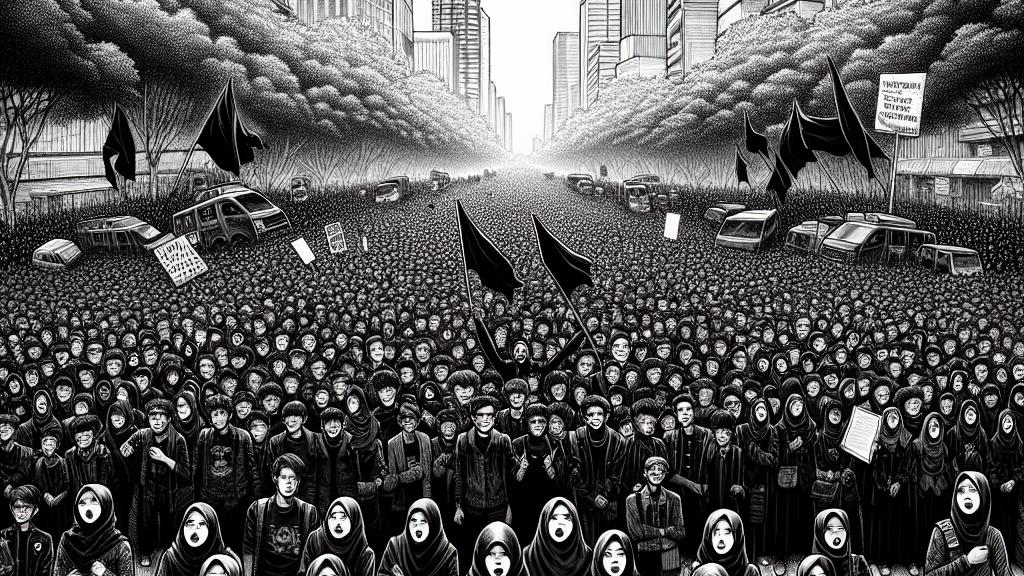Students Protest Against Education Budget Cuts in Indonesia
Overview
- Indonesian students unite across the nation to protest significant government budget cuts.
- The 'Dark Indonesia' movement symbolizes urgent calls for preserving educational and social support.
- Amid rising discontent, President Prabowo faces fierce scrutiny for financial decisions affecting youth.

The Students Take a Stand
In a remarkable display of unity, students from various corners of Indonesia—ranging from the bustling streets of Jakarta to the serene avenues of Yogyakarta—gathered on February 20, 2025, to voice their concerns about impending budget cuts to education. Dubbed the ‘Dark Indonesia’ protests, this movement saw thousands clad in black, their chants resonating like thunder in the air, echoing the urgency of their cause. With signs that read ‘Education is Our Future’ and ‘Don’t Dim Our Dreams,’ they sent a powerful message to President Prabowo Subianto, urging him to reconsider the financial decisions that threaten their academic journeys. This profound convergence not only highlights their desire for change but also signifies their fear of an uncertain future without adequate educational support.
Financial Decisions with Dire Consequences
President Prabowo's strategy of 'budget efficiency' aims to free up around $19 billion for initiatives such as a free school lunch program. While such initiatives appear beneficial, students assert that cutting education funding is a grave mistake. As prominent student leader Herianto passionately explained, ‘These budget cuts are designed to fill existing holes,’ revealing a stark reality: education could suffer immensely. Many students now worry about larger classes, decreased resources, and less support from teachers, leading to a chilling question—how can they achieve their dreams in a system starved of necessary funding? Their concerns speak volumes about the long-term consequences that these economic choices may have on their lives.
The Role of Social Media in Mobilizing Action
In today’s digital landscape, social media has emerged as a lifeline for mobilizing action and amplifying voices. The hashtag ‘Dark Indonesia’ quickly gained traction, morphing into a rallying cry that unites frustrated students and concerned citizens alike. Meanwhile, another trend called ‘Just Escape First’ emerged, portraying a disheartening sentiment: the need to leave the country for better opportunities. Students share their personal stories online, detailing their challenges and dreams, creating a vivid tapestry of aspirations tinged with frustration. This remarkable digital platform not only fuels their protests but also generates a global awareness of their struggle, fostering solidarity and urgency in the fight for their educational rights.
Promise of Prosperity vs. Reality of Cuts
Despite President Prabowo’s undeniable popularity—boasting an impressive approval rating of around 80%—a significant portion of the youth population remains disenchanted. They argue that, although his charm may captivate many, his policies risk exacerbating the challenges faced by students. The atmosphere of the protests has shifted from mere discontent to a fervent call for change; students are no longer passive observers but active participants in shaping the future they wish to see. They argue that without prioritizing education, Indonesia may fail to reach its full potential, leading to a generation disillusioned by broken promises. Their resolve during these protests illustrates that they are not merely fighting for today’s education but rather for a sustainable and equitable future that honors their ambitions and aspirations.

Loading...